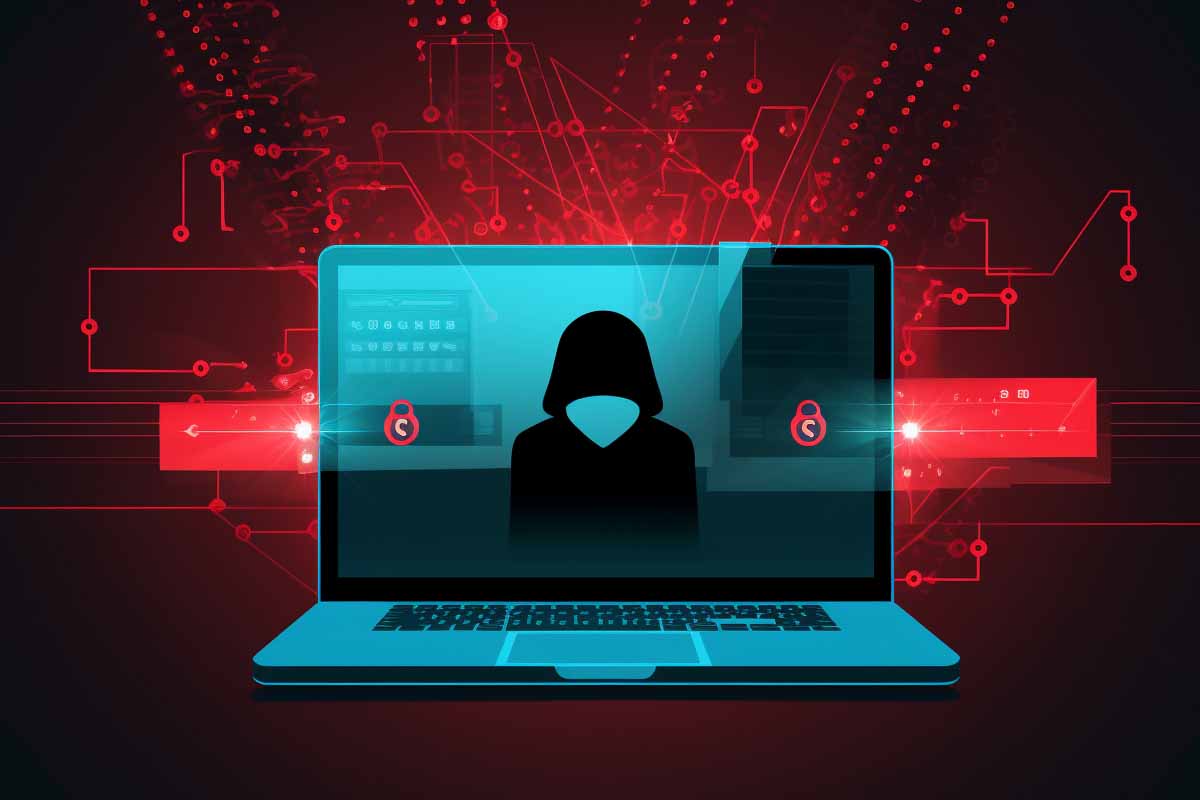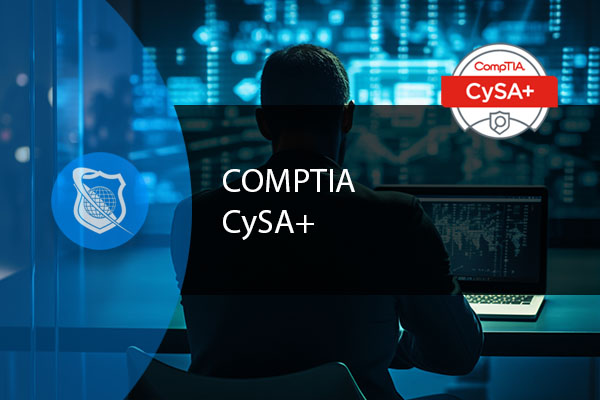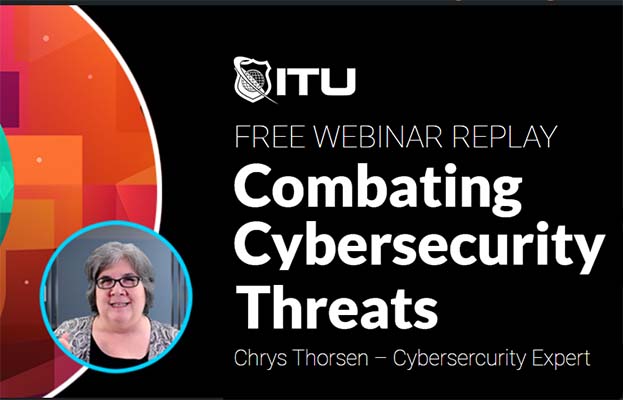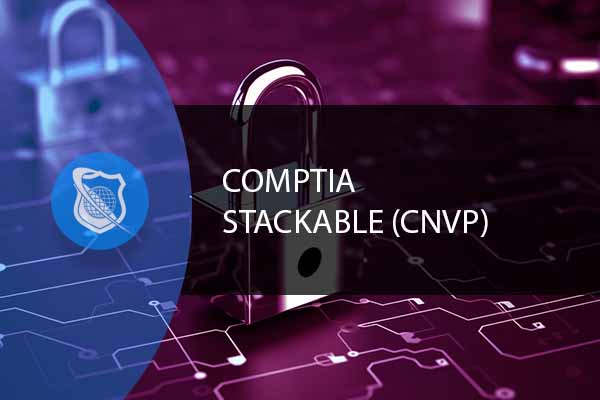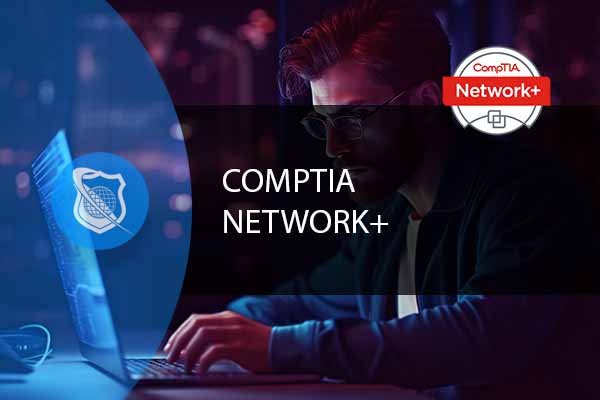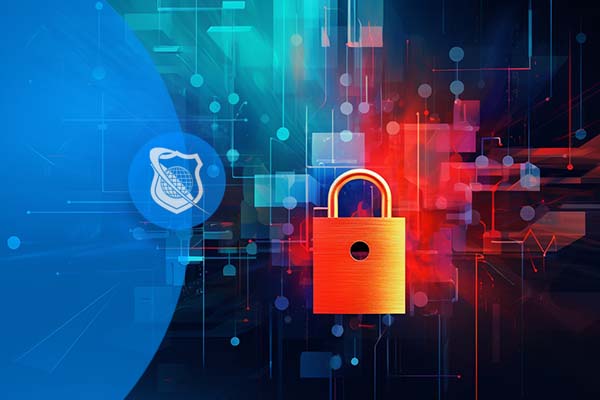Why is there a need for session hijacking prevention? Session hijacking, commonly known as session stealing, is an alarming security threat where an unauthorized user takes over an active session of another user. This unauthorized access can lead to serious breaches, potentially compromising personal data and critical business information. Thankfully, with a blend of standard practices and diligent application security measures, it is possible to prevent these attacks. In this article, we’ll explore the key strategies to fend off session hijackers.
Understanding Session Hijacking
Before diving into prevention techniques, it’s crucial to understand what session hijacking entails. It typically occurs when an attacker sniffs or captures a valid session ID from a user, and then uses that session ID to gain unauthorized access to the web application. Once inside, they can impersonate the victim, carry out transactions, or even steal sensitive data.
Cybersecurity Ethical Hacker
Ready to become an unstoppable force in cybersecurity? Our Certified Ethical Hacker V12 course is your gateway to mastering the art of ethical hacking. Dive deep into vulnerability analysis, target scanning, and stealthy network penetration. With hands-on activities and expert insights, you’ll learn to break into target networks, gather evidence, and exit without a trace. Don’t just learn to hack—learn to hack like a pro!
Prevention Techniques:
Use HTTPS Throughout
Ensure your entire website or application uses HTTPS, not just the login pages. This encrypts the session tokens and other data in transit, making it harder for attackers to capture. Using HTTPS throughout an entire website or application, rather than just on certain pages or sections, brings multiple benefits:
- Data Encryption: HTTPS encrypts the data transmitted between the user’s browser and the server. This ensures that any sensitive information, such as login credentials, personal data, or credit card details, remains confidential and cannot be easily intercepted by malicious actors.
- Data Integrity: With HTTPS, the data sent and received remains unchanged during transit. It prevents potential attackers from altering the information being exchanged, ensuring that users see the website as intended without any injected malicious content.
- Authentication: HTTPS provides a mechanism to ensure that you’re communicating with the intended website. This helps in building trust with your users, assuring them that they’re not on a fraudulent site that’s trying to impersonate a legitimate one.
- Protection Against Man-in-the-Middle Attacks: One of the primary goals of HTTPS is to prevent MITM attacks, where attackers intercept and possibly alter the communication between two parties without their knowledge. By encrypting the traffic, it becomes exceedingly difficult for attackers to make sense of any data they might capture.
- Improved SEO Ranking: Search engines, like Google, prioritize HTTPS-enabled websites. This means your website could rank higher in search results simply by having HTTPS throughout, potentially leading to more organic traffic.
- Boosts User Trust: A visible indicator, like the padlock icon in the address bar, assures users that their connection is secure. This can lead to increased user confidence, especially when carrying out sensitive transactions like online shopping or banking.
- Compliance: Some regulations and standards require data to be transmitted securely. By using HTTPS throughout, you’re ensuring that you remain compliant and avoid potential legal complications or penalties.
- Prevents Mixed Content Issues: When a secure page (HTTPS) loads insecure (HTTP) resources, it’s referred to as mixed content. This can break the security guarantees provided by HTTPS. Having HTTPS throughout avoids such issues by ensuring all resources are loaded securely.
- Forward Secrecy: Modern HTTPS configurations often employ techniques known as forward secrecy, which ensures that even if a session key is compromised, it cannot be used to decrypt past sessions.
- Enhanced Performance: With the adoption of HTTP/2, many sites on HTTPS can now load faster than their HTTP counterparts. This is due to improvements and new features in HTTP/2, which is often supported in conjunction with HTTPS.
In summary, using HTTPS throughout a website or application not only ensures robust security but also contributes to better user experience, trust, performance, and SEO advantages.
Implement Secure Cookies
Set the ‘Secure’ and ‘HttpOnly’ flags for cookies. The ‘Secure’ flag ensures the cookie is only sent over secure, encrypted connections, and ‘HttpOnly’ ensures the cookie isn’t accessible via JavaScript. Implementing secure cookies is a fundamental aspect of web application security. By ensuring that cookies are configured with the right attributes, you can substantially reduce the risks associated with data interception and unauthorized access. Here are the benefits of implementing secure cookies:
- Protection Against Eavesdropping: Setting the ‘Secure’ flag ensures that cookies are only transmitted over encrypted HTTPS connections. This means the information stored in the cookie is protected from being intercepted in plaintext by attackers, especially on insecure networks like public Wi-Fi.
- Mitigates Cross-Site Scripting (XSS) Attacks: The ‘HttpOnly’ flag ensures that the cookie cannot be accessed through JavaScript. This is crucial for preventing malicious scripts from reading sensitive session cookies.
- Reduction in Session Hijacking Risk: By ensuring that cookies are secure and not accessible via scripts, the chances of an attacker hijacking a user’s session diminish significantly.
- Protection Against Man-in-the-Middle Attacks: By transmitting cookies only over HTTPS, the risks associated with attackers intercepting and tampering with cookie data are reduced.
- Enhanced User Trust: When users know that their data and sessions are secured, they’re more likely to trust and engage with a website, especially for platforms that handle sensitive data like e-commerce sites, banking platforms, and online services.
- Compliance with Standards and Regulations: Many regulations and industry standards, such as GDPR or PCI DSS, emphasize ensuring user data privacy and security. By implementing secure cookies, businesses move closer to compliance with these standards.
- Consistency in Security Posture: By uniformly implementing secure cookie settings across applications, organizations ensure a consistent security posture, leaving fewer weak points for attackers to exploit.
- Protection Against Mixed Content: Using secure cookies reduces the likelihood of facing mixed content issues (when secure and non-secure content are loaded on the same page) that could degrade the security of a session.
- Avoidance of Data Breaches: Secure cookies minimize the chances of unauthorized data access, which can protect businesses from the repercussions of data breaches, including financial losses, legal issues, and damage to reputation.
- Supports a Comprehensive Security Strategy: Secure cookies should be a part of a broader web application security strategy. When combined with other security measures like HTTPS, Content Security Policy (CSP), and strong authentication mechanisms, it leads to a robust defense against a variety of web-based attacks.
In conclusion, cookies often hold valuable information, and ensuring their security is paramount. By using the ‘Secure’ and ‘HttpOnly’ flags, along with other best practices, businesses can offer a safer browsing experience for their users and protect critical data from potential threats.
CompTIA CySA+ Training
Ready to fortify digital landscapes? Unleash your potential with our CySA+ course. Master behavioral analytics, shield networks, and become a certified defender against cyber threats. Elevate your security prowess, ace the CompTIA CySA+ (CS0-003) exam, and secure a resilient future for organizations
Session Timeout
Implement a session timeout, ensuring that idle sessions are terminated after a certain period. This reduces the window of opportunity for an attacker. Implementing a session timeout is a standard security practice for many web applications and services. By ensuring that inactive sessions expire after a predetermined period, organizations can bolster their security measures and reduce potential threats. Here are the primary benefits of employing session timeouts:
- Reduced Window of Opportunity for Attackers: If an attacker gains access to a user’s session, the session timeout limits how long they can use that session. The shorter the session duration, the less time they have to exploit it.
- Protection Against Unauthorized Access: If a user forgets to log out of a public or shared computer, session timeouts automatically log them out, ensuring that the next user of that device can’t gain unauthorized access.
- Mitigation of Risks from Lost or Stolen Devices: If a device, such as a smartphone or laptop, is lost or stolen while a user is still logged into an application, the session timeout will automatically log out the user after a certain period, reducing the risk of unauthorized access.
- Resource Optimization: Active sessions consume server resources. By timing out inactive sessions, it can help in freeing up system resources and optimizing server performance.
- Enhanced User Data Protection: By ensuring that sessions expire, any data or personalized settings within that session are less likely to be exposed to unauthorized individuals.
- Defense Against Session Fixation Attacks: In session fixation attacks, an attacker sets a user’s session ID to one known to the attacker, waits for the user to login, and then uses that user’s session ID to gain unauthorized access. Session timeouts can reduce the effectiveness of this kind of attack by limiting the session’s lifespan.
- Promotes User Vigilance: Regularly prompting users to re-authenticate can raise their awareness about security. They may become more diligent about logging out manually and ensuring they protect their credentials.
- Compliance with Regulations and Standards: Some industry regulations and standards necessitate specific session timeout durations to ensure data security, especially for applications handling sensitive data.
- Protects Against Potential Internal Threats: In larger organizations, it’s possible for employees to momentarily leave their workstations unattended. Session timeouts reduce the risk of colleagues or other internal entities taking advantage of these moments to access sensitive information.
- Supports a Layered Security Approach: No single security measure is foolproof. Session timeouts act as one of several layers in a comprehensive security strategy, working alongside other measures like multi-factor authentication, encryption, and regular audits.
In summary, while session timeouts are a simple concept, their impact on security is substantial. By ensuring that inactive sessions do not linger indefinitely, organizations can significantly reduce numerous potential threats and vulnerabilities.
Random Session IDs
Use a secure method to generate session IDs that are random, long, and unpredictable. Avoid using easily guessable information like incremental numbers or usernames. Using random session IDs is a cornerstone of securing user sessions in web applications. A session ID serves as a token that identifies and validates a user’s interaction with a web application during a particular session. Ensuring that this ID is random and unpredictable offers numerous benefits:
- Prevents Predictable Session Patterns: By generating random session IDs, attackers can’t easily predict or guess active session IDs based on patterns or known sequences.
- Mitigates Session Fixation Attacks: Session fixation is an attack where an attacker tries to force a session ID onto a user so that once the user authenticates, the attacker has access to that authenticated session. Random session IDs make it difficult for attackers to pre-determine or dictate session IDs.
- Reduced Chances of Session Hijacking: Random and unpredictable session IDs make it harder for cybercriminals to hijack active sessions because the probability of correctly guessing an active session ID becomes extremely low.
- Ensures Unique Identifiers: Random generation typically ensures that every session has a unique ID, which is crucial for accurately identifying and managing individual user sessions.
- Supports Scalability: Random session IDs don’t rely on a set sequence, which means that as your user base grows, the system doesn’t struggle to generate unique IDs.
- Upholds User Privacy: Since session IDs can sometimes hold or represent user-specific information, making them random ensures that one can’t infer user behavior or identity based on the ID.
- Enhances Overall Security Posture: Implementing random session IDs signals a commitment to security best practices, forming part of a comprehensive strategy to protect user data and interactions.
- Avoids Logic-Based Flaws: Using deterministic or logic-based methods to create session IDs can introduce flaws or vulnerabilities, especially if the logic becomes known. Random generation sidesteps this problem.
- Compatibility with Modern Security Systems: Many modern security tools and systems expect session IDs to be random. This ensures that these tools can function optimally and provide the best protection for users.
- Encourages the Use of Secure Algorithms: To generate truly random session IDs, developers often turn to secure cryptographic algorithms, further enhancing the security of the ID generation process.
In conclusion, the randomness and unpredictability of session IDs are pivotal in ensuring the security of user sessions in web applications. Such practices deter a wide range of potential attacks and vulnerabilities, safeguarding both the user’s data and the integrity of the application.
Sign Up For Our Free Webinar Replay, Combating Cybersecurity Threats
Join us and take advantage of a replay of our Webinar Series on Combating Cyber Threats. During this webinar, our expert discusses device baiting in this informational 90 minutes webinate
Regenerate Session ID after Login
After a successful login, change or regenerate the session ID. This ensures that if an attacker did capture the session ID during the login process, it would be useless post-authentication. Regenerating session IDs after login is a recommended security measure in many web applications. It involves providing a new session ID to the user after they have successfully authenticated. This practice brings several critical security benefits:
- Mitigation of Session Fixation Attacks: If an attacker has managed to plant a known session ID on a victim (forcing the victim to use this ID), the ID becomes useless once the user logs in, because the application issues a new, fresh session ID post-authentication.
- Reduces Window for Exploitation: If an attacker has a limited timeframe to exploit a session, changing the session ID after login further narrows that window, making it more challenging to hijack the session.
- Enhanced User Session Security: By regularly changing session IDs, especially at critical junctures like login, the security of user sessions is bolstered against potential threats.
- Protection Against Residual Access: If a user initially accesses an application on an insecure or shared system and then switches to a secure environment, regenerating the session ID ensures that any potential threats on the insecure system can’t use the old session ID.
- Supports a Principle of Least Privilege: Before login, sessions might have minimal privileges (e.g., just browsing a site). After login, privileges elevate (access to account details, ability to make purchases, etc.). By changing the session ID at this transition, you ensure that session tokens issued under lower privilege states don’t carry over to higher privilege states.
- Upholds User Trust: Users who are aware of the underlying security measures are more likely to trust the platform. Knowing that the application adopts practices like session ID regeneration after login reinforces this trust.
- Complements Other Security Measures: Session ID regeneration can be part of a multi-layered security strategy, working in tandem with other measures like HTTPS, secure cookies, and two-factor authentication.
- Deters Sophisticated Attackers: Cyber attackers often plan their strategies based on predictability and patterns. When applications change session IDs post-login, they introduce an unpredictable element that can deter or confound more sophisticated attackers.
- Enhanced Audit and Logging: By regenerating session IDs, especially during significant events like logins, applications can have a clearer log and audit trail. This can help in forensic analysis if there’s a security incident.
- Encourages Good Security Hygiene: Regularly changing and updating security credentials is a foundational practice in cybersecurity. Regenerating session IDs is in line with this principle, promoting good security hygiene and discipline.
In essence, the practice of regenerating session IDs after login is a proactive measure that significantly reduces several potential threats associated with session management. It’s a relatively simple step that can yield substantial security dividends.
Limit Concurrent Sessions
Prevent users from logging in multiple times simultaneously from different devices or locations. This can be an indication of session theft. Limiting concurrent sessions is a practice in which a user is restricted from having multiple active sessions simultaneously. This security measure is adopted in various systems, especially those handling sensitive data or critical operations. Here are the primary benefits of limiting concurrent sessions:
- Prevents Unauthorized Access: If an attacker gains access to a user’s credentials, they might try to log in while the legitimate user is also active. By preventing concurrent sessions, systems can stop potential unauthorized access in its tracks.
- Enhanced Account Monitoring: If a user tries to log in from two distant locations simultaneously, it can serve as a red flag for suspicious activity, potentially indicating compromised credentials.
- Resource Management: Active sessions consume server resources. By limiting the number of concurrent sessions per user, it’s easier to manage and allocate resources effectively, leading to improved system performance.
- Encourages Secure Behavior: When users are aware of concurrent session limitations, they’re more likely to log out from devices they’re not using. This promotes better security hygiene and reduces the risk of session hijacking from unattended devices.
- Mitigation of Session Hijacking: If an attacker tries to hijack an active session, a limitation on concurrent sessions can either prevent the attacker’s attempt or alert the legitimate user (by forcibly logging them out), prompting them to take action.
- Protection of Sensitive Data: For platforms handling sensitive data, limiting concurrent sessions ensures that data isn’t being accessed or viewed from multiple, potentially insecure locations at once.
- Compliance and Regulation: Some industries have regulations or standards that stipulate certain security measures. Limiting concurrent sessions might be a requirement or a recommended practice to ensure data security.
- Reduction in Attack Surface: By allowing users only one active session, the number of potential points of attack is effectively reduced.
- Improved User Accountability: If users can only access a system from one location at a time, it’s easier to track and audit their actions. This can be crucial for systems where accurate auditing and accountability are necessary.
- Enhanced Security for Shared Accounts: In cases where multiple individuals might share a single account (not a recommended practice but still prevalent in some settings), limiting concurrent sessions can prevent the chaos and security risks associated with multiple people accessing the same account simultaneously.
- Supports a Layered Security Approach: Limiting concurrent sessions acts as one layer in a broader security strategy. While no single security measure is foolproof, each layer added increases the overall protection of the system.
In conclusion, while limiting concurrent sessions can occasionally lead to minor inconveniences for users, the security advantages it provides are substantial. It acts as a safeguard against several potential threats, ensuring a more secure user experience.
Implement Multi-Factor Authentication (MFA)
MFA requires users to provide multiple forms of identification before gaining access. Even if an attacker hijacks a session, without the second form of verification, they can’t proceed. Multi-Factor Authentication (MFA), sometimes known as Two-Factor Authentication (2FA), is a security process wherein users are required to provide two or more verification factors to gain access to a resource, such as an application, online account, or a VPN. MFA significantly enhances security, and here are the primary benefits of its implementation:
- Enhanced Security: The primary advantage of MFA is that it adds an extra layer of security, making it more challenging for unauthorized users to access accounts, even if they have the password.
- Protection Against Phishing: Even if a user’s credentials are compromised in a phishing attack, MFA can prevent unauthorized access since the attacker would also need the second authentication factor.
- Mitigation of Stolen Credentials: If a password gets stolen or leaked, MFA ensures that the password alone isn’t sufficient to gain access.
- Reduced Password Fatigue: Since MFA does not rely solely on passwords, users might feel less pressure to frequently change passwords or reuse them across services, reducing “password fatigue.”
- Protection Against Keyloggers: Even if malware or a keylogger captures a user’s password, MFA requires an additional factor (like a one-time code from a smartphone) that the attacker cannot easily obtain.
- Defence Against Brute Force Attacks: While attackers can employ automated tools to guess passwords, the dynamic nature of the second authentication factor in MFA (like a time-sensitive code) makes brute force attacks significantly less effective.
- Adaptive Authentication: Some MFA solutions can adapt based on context, prompting for additional authentication only in suspicious scenarios, such as login attempts from new locations or devices.
- Improved Compliance: Many industry regulations and standards require MFA due to its enhanced security. Implementing MFA can help organizations comply with these requirements, avoiding potential fines and penalties.
- User Confidence: Knowing that there’s an added layer of security increases the trust users place in a platform, encouraging them to use digital services more frequently.
- Decreased Risk of Fraud: For businesses, MFA can lead to decreased risk of fraud, particularly in sectors like banking and e-commerce.
- Flexibility: MFA solutions can be implemented in various ways, from SMS codes and mobile app notifications to biometrics and hardware tokens, allowing organizations to choose the method that best suits their needs.
- Reduced Operational Costs: By preventing security breaches, organizations might face fewer expenses related to damage control, customer notifications, and potential lawsuits.
- Supports a Zero Trust Approach: MFA aligns well with the “never trust, always verify” principle of the Zero Trust security model, ensuring that user identities are consistently verified.
In conclusion, Multi-Factor Authentication is a crucial security measure in the modern digital landscape. As cyber threats continue to evolve, relying solely on passwords is no longer sufficient. Implementing MFA provides a more robust defense, safeguarding both users and the systems they access.
CompTIA CNVP Training Course
The CompTIA CNVP is an invaluable certification specifically crafted for IT professionals with 2 to 5 years of experience. This stackable program provides the course materials required to not only earn your Security+ and PenTest+ certifications, but also allows you to excel in your knowledge as a cybersecurity specialist.
Monitor Session Patterns
Regularly monitor and analyze session behaviors. Unusual patterns, like sudden location changes or erratic behavior, can be red flags. Monitoring session patterns refers to the practice of keeping track of user behaviors during their online sessions. This involves analyzing how users interact with web applications, the duration of their sessions, their IP addresses, the devices they use, and more. Monitoring these patterns offers a host of security and operational benefits:
- Detection of Anomalous Behavior: By understanding typical session patterns, organizations can detect deviations from the norm, which could be indicative of malicious activity or account compromise.
- Prevention of Data Breaches: Quick identification of unusual activity can lead to timely interventions, potentially preventing data breaches or unauthorized access.
- Mitigation of Session Hijacking: If a user’s session suddenly shifts from one geographical location to another in an impossibly short time frame, it could be a sign of session hijacking.
- Improved User Experience: By understanding user behaviors and patterns, organizations can optimize the user experience, identifying areas for improvement and ensuring seamless interactions.
- Understanding User Habits: Monitoring session patterns can also offer insights into user habits, which can inform product development, marketing strategies, and customer engagement.
- Reduced Fraud: For businesses, particularly in e-commerce and online banking, understanding session patterns can be instrumental in detecting and preventing fraudulent transactions.
- Support for Forensic Analysis: In the event of security incidents, having a detailed log of session patterns can aid in forensic investigations, helping to understand the nature, extent, and origin of the attack.
- Enabling Adaptive Authentication: With insights from session patterns, systems can challenge users with additional authentication layers when deviations are detected, thus bolstering security.
- Optimization of Resources: Understanding peak usage times and common user paths can help in optimizing server resources and bandwidth.
- Early Detection of System Failures: Monitoring session patterns can help detect sudden drops in user activity, which could indicate system failures or accessibility issues.
- Enhanced Regulatory Compliance: Some regulations may require diligent monitoring and reporting of user activities, especially in sectors dealing with sensitive data.
- Support for Continuous Improvement: Consistent monitoring can reveal areas of a web application or platform that users find confusing or problematic, guiding iterative improvements.
- Better Decision Making: With more data on how users interact with a platform, businesses can make more informed decisions about feature rollouts, retirements, or modifications.
- Increased User Trust: When users are aware that their session patterns are monitored for security reasons, it can enhance their trust in a platform’s commitment to security.
In summary, monitoring session patterns is a proactive approach to both cybersecurity and user experience optimization. By understanding how users typically interact with a system and swiftly recognizing when they deviate from established patterns, organizations can enhance security, improve user engagement, and make more informed business decisions.
Educate Users
Ensure that your users are aware of phishing scams and the importance of not sharing their credentials. A well-informed userbase can act as a first line of defense. Educating users about the risks and prevention methods related to session hijacking is a pivotal strategy for safeguarding digital assets and ensuring a secure online environment. Here are the benefits of educating users in this context:
- Informed Decision-Making: When users are educated about session hijacking, they’re better equipped to make informed decisions online, such as avoiding suspicious links or using secure networks.
- Reduction of Vulnerabilities: An educated user is less likely to fall victim to common tactics used by attackers, like phishing or malicious downloads, which can lead to session hijacking.
- Enhanced Reporting: Users who are aware of session hijacking risks are more likely to report suspicious activity or anomalies, enabling faster response times and potentially mitigating threats.
- Promotion of Safe Habits: Education promotes safe online habits, such as logging out of accounts when finished, not sharing session links, or using strong, unique passwords.
- Increased Adoption of Security Tools: Informed users are more likely to adopt recommended security tools and practices, such as using VPNs on public networks or enabling multi-factor authentication.
- Lower Incident Rates: A direct consequence of education is a reduction in the number of security incidents related to session hijacking. Fewer incidents mean fewer costs associated with mitigation, investigation, and recovery.
- Shared Responsibility: By educating users, organizations distribute the responsibility of security. Instead of relying solely on backend measures, there’s a collective effort between users and technical teams to maintain a secure environment.
- Protection of Personal Data: Users who understand the implications of session hijacking will be more cautious, thereby protecting their personal and sensitive data from exposure.
- Improved Trust: When users are educated and involved in security processes, it fosters a sense of trust between them and the service provider or organization.
- Enhanced Organizational Reputation: Organizations that take proactive steps to educate their users are often seen as more reputable and trustworthy, enhancing their brand image.
- Cost Savings: Preventing session hijacking incidents through education can lead to substantial cost savings, as the expenses involved in managing and recovering from breaches can be exorbitant.
- Strengthened Overall Security Posture: User education is a layer in a multi-layered security strategy. Combined with other measures, it significantly strengthens an organization’s overall defense against cyber threats.
- Empowerment: Educating users empowers them to take control of their online security, leading to increased confidence and self-assurance when navigating the digital world.
In conclusion, while technical measures are crucial in combating session hijacking, the human element cannot be ignored. An informed and vigilant user base serves as a strong first line of defense, making it much harder for attackers to exploit vulnerabilities and conduct successful session hijacking attacks.
Perpare for CompTIA Network+ Certification
Learn concrete vendor neutral Network fundamentals in our comprehensive CompTIA Network+ traning course.
Use Web Application Firewalls (WAF)
A WAF can help detect and block malicious web traffic. It’s an additional layer of security that can prevent many web-based attacks, including session hijacking. Web Application Firewalls (WAF) are a specialized type of firewall that focuses on the protection of web applications by monitoring, filtering, and blocking HTTP traffic to and from web applications. They are particularly adept at defending web applications against various forms of attacks, such as SQL injection, cross-site scripting (XSS), and session hijacking. Here are the benefits of using WAF:
- Protection Against Web-Based Attacks: WAFs are specifically designed to block common web attack vectors, such as SQL injection, XSS, and CSRF attacks, ensuring that web applications remain secure.
- Customizable Security Rules: Organizations can define custom security rules for their WAF, allowing for a tailored defense against specific threats or to suit the unique requirements of a particular web application.
- Virtual Patching: If a vulnerability is discovered in a web application, a WAF can serve as a temporary defense by blocking exploit attempts while the actual vulnerability is being addressed.
- Protection Against DDoS Attacks: Many WAFs offer features that help mitigate Distributed Denial of Service (DDoS) attacks, ensuring that web applications remain accessible even during such attacks.
- Insight into Traffic: WAFs provide detailed insights into web traffic, helping organizations understand their user base, detect patterns, and spot anomalies.
- Protection Against Zero-Day Exploits: Due to their heuristic and behavioral analysis capabilities, some advanced WAFs can detect and block previously unknown threats or zero-day exploits.
- Stopping Bots and Web Scrapers: WAFs can distinguish between legitimate users and malicious bots, preventing scrapers, automatic brute force attackers, and other malicious bots from accessing the application.
- SSL Termination: WAFs can handle SSL termination, offloading the SSL handshake process and encrypting/decrypting user sessions, thereby improving web application performance.
- Load Balancing: Some WAFs also offer load balancing capabilities, distributing incoming traffic to ensure high availability and consistent performance.
- Compliance Requirements: For organizations subject to regulations like PCI DSS, having a WAF in place might be a requirement or, at the very least, help in achieving compliance.
- Reduction in False Positives: Advanced WAFs employ machine learning and other techniques to reduce the number of false positives, ensuring that legitimate traffic isn’t mistakenly blocked.
- Session Management: WAFs can manage and control web application sessions, adding an additional layer of protection against threats like session hijacking.
- Centralized Management: Organizations can manage security for multiple web applications from a central dashboard, streamlining the monitoring, management, and updating processes.
- Cost Savings: By preventing security breaches, WAFs can lead to substantial cost savings, avoiding potential expenses related to data breaches, such as mitigation, notification, legal fees, and damage to reputation.
In conclusion, a Web Application Firewall acts as a shield between a web application and the cyber threats of the internet. With the rising complexity and frequency of web attacks, having a WAF in place is a crucial component of a comprehensive cybersecurity strategy.
Conclusion:
Session hijacking, while menacing, can be effectively combated with a blend of proper application design, user education, and continuous monitoring. By understanding the threat and implementing the above practices, businesses can create a robust shield against unauthorized session access. Always stay updated with the latest security practices and protocols, as cyber threats are continually evolving.
What is session hijacking?
Session hijacking, also known as session takeover, is a type of cyber-attack where an attacker takes control of a user’s session, a semi-permanent interactive information interchange between two or more communicating devices. The attacker exploits the session control mechanism and masquerades as the legitimate user, gaining unauthorized access to sensitive information or services within a computer system.
How does session hijacking occur?
Session hijacking can happen through various methods. Common techniques include predicting or brute-forcing a session token to gain unauthorized access, capturing a valid session token through packet sniffing on unsecured networks, exploiting Cross-Site Scripting (XSS) vulnerabilities to steal session tokens, and performing Man-in-the-Middle (MitM) attacks to intercept and alter communication between two parties.
What are the common signs of a session hijacking attack?
Signs of a session hijacking attack can include unusual activities on your account, such as access from unknown IP addresses or devices, unexpected logouts, or multiple active sessions that you did not initiate. You might also notice unauthorized changes to your account settings or data and experience slow network performance, which can indicate data interception and transfer.
How can individuals and organizations protect against session hijacking?
To protect against session hijacking, it is crucial to use secure HTTP (HTTPS) to encrypt data in transit, secure cookies by marking them as Secure and HttpOnly, and implement session timeouts to limit the session duration. Regularly updating all systems and software to protect against known vulnerabilities and educating users about secure browsing practices, recognizing phishing attempts, and the importance of strong, unique passwords are also essential steps.
What should I do if I suspect my session has been hijacked?
f you suspect that your session has been hijacked, you should immediately log out of all sessions, change your passwords and security questions, and check your account for any unauthorized or suspicious activities. It’s also advisable to notify the service provider or website administrator about the incident and consider enabling additional security measures such as two-factor authentication (2FA), if available.

